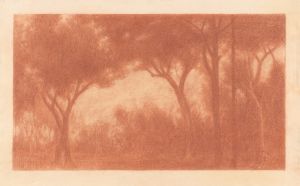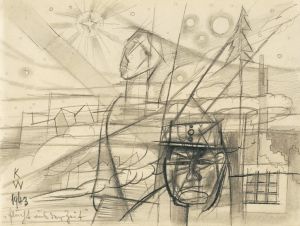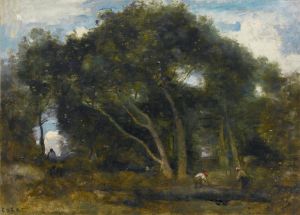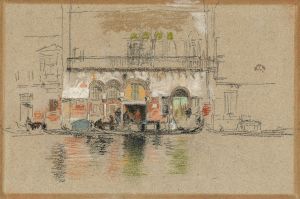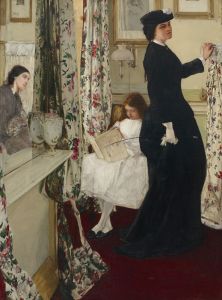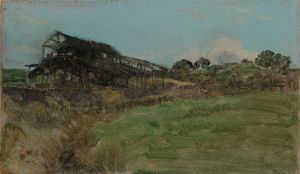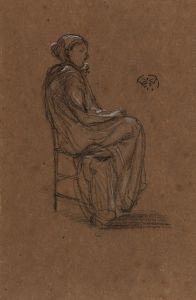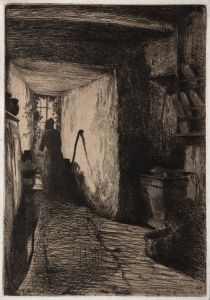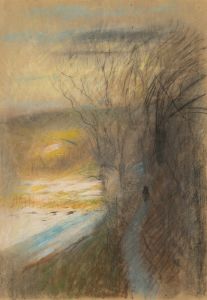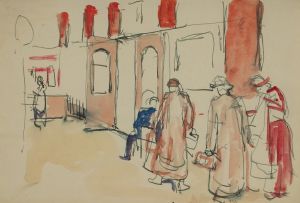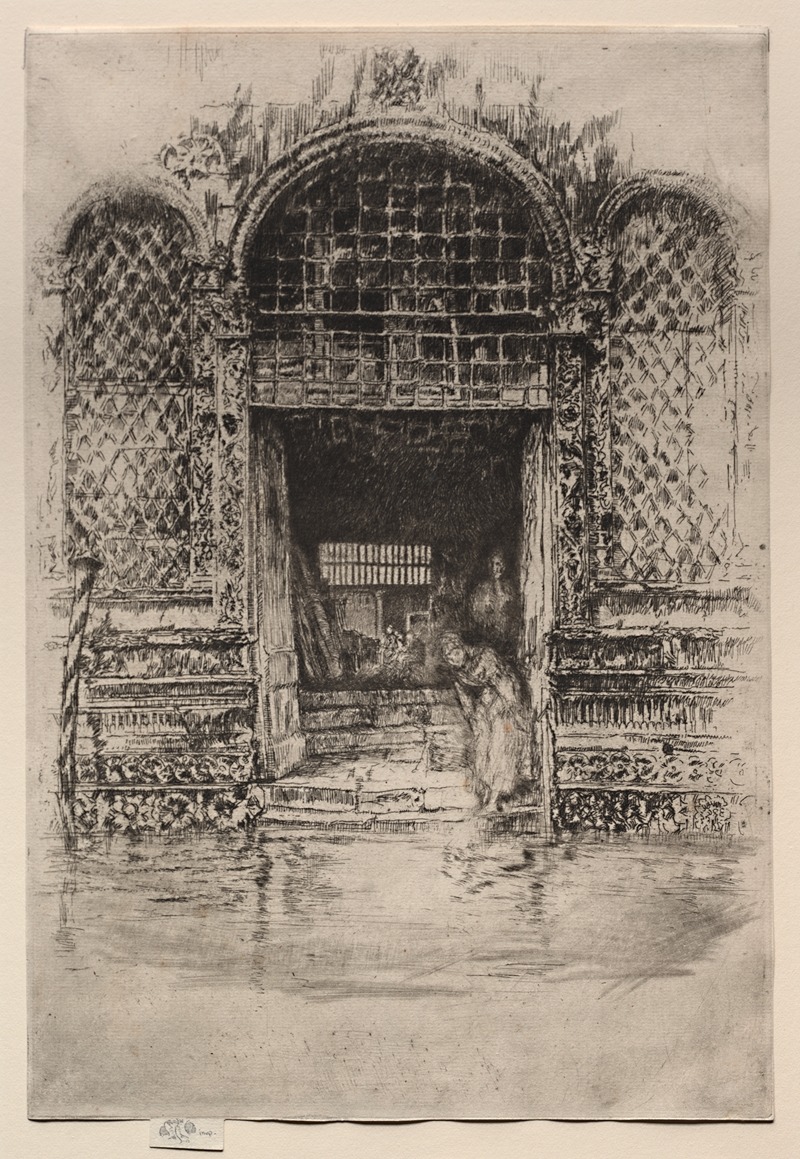
The Doorway
A hand-painted replica of James Abbott McNeill Whistler’s masterpiece The Doorway, meticulously crafted by professional artists to capture the true essence of the original. Each piece is created with museum-quality canvas and rare mineral pigments, carefully painted by experienced artists with delicate brushstrokes and rich, layered colors to perfectly recreate the texture of the original artwork. Unlike machine-printed reproductions, this hand-painted version brings the painting to life, infused with the artist’s emotions and skill in every stroke. Whether for personal collection or home decoration, it instantly elevates the artistic atmosphere of any space.
"The Doorway" is an etching created by the American-born artist James Abbott McNeill Whistler in 1879. Whistler is renowned for his contributions to the Aesthetic Movement, which emphasized art for art's sake, focusing on beauty and visual harmony rather than narrative content. This particular work is part of Whistler's "Venice Set," a series of etchings that capture the essence and atmosphere of Venice, Italy.
Whistler was commissioned to create this series after his financial difficulties in London, which were exacerbated by a costly libel case against the art critic John Ruskin. In 1879, Whistler traveled to Venice, where he spent over a year producing a collection of etchings and pastels that would later be celebrated for their innovative approach to capturing the city's unique light and architecture.
"The Doorway" is notable for its intricate detail and the way it captures the interplay of light and shadow. The etching depicts a Venetian doorway, framed by the architectural elements typical of the city's historic buildings. Whistler's technique in this piece demonstrates his mastery of line and texture, using fine, delicate lines to convey the weathered surfaces and ornate details of the doorway.
The composition of "The Doorway" reflects Whistler's interest in the abstract qualities of space and form. Rather than focusing on a grand vista or a famous landmark, Whistler chose a more intimate subject, inviting viewers to appreciate the beauty in everyday scenes. This approach aligns with the principles of the Aesthetic Movement, which valued the visual and sensory experience of art over its narrative or moral content.
Whistler's time in Venice was transformative for his career. The "Venice Set," including "The Doorway," was well-received upon its exhibition in London in 1880. Critics and collectors praised the works for their atmospheric qualities and technical precision. These etchings helped to restore Whistler's reputation and financial stability, allowing him to continue his artistic pursuits.
"The Doorway" and other works from the "Venice Set" are considered significant contributions to the etching revival of the late 19th century. Whistler's innovative techniques and his ability to capture the essence of Venice influenced a generation of artists and printmakers. Today, "The Doorway" is held in various public and private collections, where it continues to be appreciated for its artistic and historical significance.
In summary, "The Doorway" by James Abbott McNeill Whistler is a masterful etching that exemplifies the artist's skill in capturing the subtle beauty of Venice's architecture. Through his detailed and atmospheric depiction, Whistler invites viewers to see the world through his eyes, finding art in the everyday and the ordinary.





